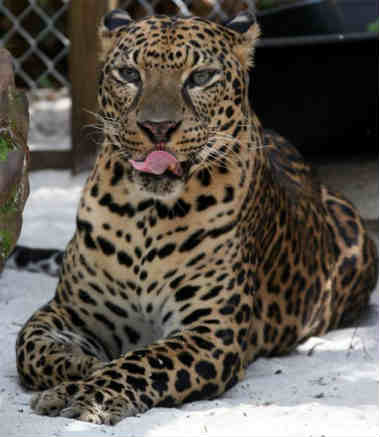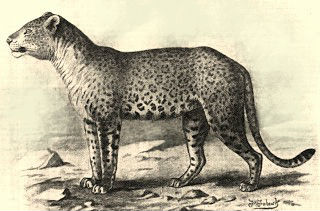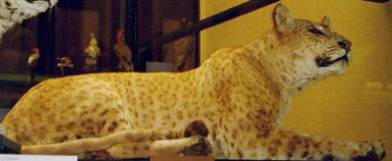Jaguar-leopard Hybrids
Mammalian Hybrids
EUGENE M. MCCARTHY, PHD GENETICS, ΦΒΚ
|
A diligent scholar is like a bee who takes honey from many different flowers and stores it in his hive.
—John Amos Comenius
|
 A male jagulep
A male jagulep
Given that their parents’ ranges are isolated on separate continents, jaguar-leopard hybrids occur only in captivity. They are known under various names, “lepjags” (jaguar female × leopard male) or “jaguleps” (jaguar-leopardess). Other names are “jagopards” (jaguar-leopardess) and “leguars” (jaguar female × leopard male).
Hybrids of both sexes have been reported. Mentions of fertile female jaguar-leopard hybrids seem all to refer to hybrids from leopard mothers.
Jaguar-leopard hybrids were intentionally produced at Hellabrunn Zoo in Munich during the early 1900s. During that same era, other such hybrids were also produced in Chicago. According to Karl Shuker,
In a letter to The Field (Nov. 2nd, 1912), Reginald Innes Pocock, Superintendent of the London Zoo from 1904 to 1923, discusses this three-way hybrid
 Reginald Innes Pocock
Reginald Innes Pocock(1863-1947)
This hybrid was placed in the Zoological Gardens of London on April 14, 1908, and is probably the same individual that was later stuffed and put on display as a jaglion at the Natural History Museum at Tring (see image below).
 Frederick W. Frohawk’s illustration of the three-way cross described above, lion ♂ × (jaguar × leopardess) ♀.
Frederick W. Frohawk’s illustration of the three-way cross described above, lion ♂ × (jaguar × leopardess) ♀. This specimen, on display at the Tring Museum, was labeled as a jaglion (lion x jaguar), but is probably the three-way cross discussed above: lion × (jaguar × leopard). Image: Sarah Hartwell
This specimen, on display at the Tring Museum, was labeled as a jaglion (lion x jaguar), but is probably the three-way cross discussed above: lion × (jaguar × leopard). Image: Sarah Hartwell
Publications consulted: Anonymous 1948; Antonius 1951a; Bartlett and Bartlett 1900; de Lavison 1863; Fitzinger 1855 (includes picture of hybrid), 1868, 1869; Flower 1929a (p. 79); Gray 1972; Hemmer 1966 (Figs. 79, 82), 1968c; International Zoo Yearbook 1970, 1971; Kemna 1953; Leyhausen 1950; Mitchell 1930; Noack 1908a, 1908b; Peters 1978; Petzsch 1951, 1956; Pohle 1969; Przibram 1910; Rörig 1903; Severtzov 1858; Windischbauer 1968 (includes picture of hybrid); Urbain and Rinjard 1950. PictureS: tinyurl.com/had9skq; Internet: tinyurl.com/hey3grd.
A list of cat crosses
The following is a list of reported cat crosses. Some of these crosses are much better documented than others (as indicated by the reliability arrow). Indeed, some might seem completely impossible. But all have been reported at least once. The links below are to separate articles. Additional crosses, not listed here, are covered on the cat hybrids page.
|
|
By the same author: Handbook of Avian Hybrids of the World, Oxford University Press (2006).
Most shared on Macroevolution.net:
Human Origins: Are we hybrids?
On the Origins of New Forms of Life
Mammalian Hybrids
Cat-rabbit Hybrids: Fact or fiction?
Famous Biologists
Dog-cow Hybrids
Georges Cuvier: A Biography
Prothero: A Rebuttal
Branches of Biology
Dog-fox Hybrids